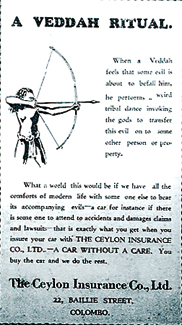Ceylinco: A story that took off with bus drivers and mill owners
The phrase, ‘when the going gets tough, the tough get going’ serves not only as a title but as a leitmotif that runs through a book about Ceylinco Insurance written by J. Godwin Perera, the chairman of Ceylinco Insurance PLC. This concise history is filled with names and events and serves as something of a case study, offering up the wisdom of a company that after having cleared several tall hurdles is still very much in the running.

Mr. Perera starts at the beginning, when Ceylinco was founded in 1939. The initial public offering of the first Ceylonese insurance company was met with disdain among the business elite but Rosslyn Koch, founder director and chairman remembers that it was the public at large – the bus drivers and mill owners who gave them their first business.
Though Hugh C. Weerasekera is credited with founding the company, Justin Kotalawela is best remembered as the visionary leader who decided to expand its business portfolio. Vintage advertisements dating to the early 1940s make for a charming addition to the book. On one page we have a quote from Winston Churchill, followed by an exhortation to combine “prudence with patriotism” by taking out an insurance policy from a Sri Lankan company. On the opposite page a Veddah shoots a bow – he, we are told, performs a ‘weird tribal dance’ invoking the gods to transfer evil away from his person, the idea being that a good insurance policy might fulfil a similarly divine role in your life.
Some of the most tumultuous times came with the Second World War, in which Ceylon feared a Japanese attack. An astonishing lack of up to date intelligence meant that few realised the very real threat posed by a Japanese fleet sailing toward Ceylon and its critical naval base. Later, Sir Winston Churchill would admit that it gave him sleepless nights – it was “the most dangerous moment of war,” said Churchill and one that caused him the “greatest alarm. ”
As a dog fight between allied aircraft and Japanese fighters took place in the skies above Colombo, Justin Kotalawela moved several departments to his estates in Pitipana. The skeleton staff that remained would frequently have their policy processing interrupted by emergency drills. However, the fledging company withstood the trials of wartime and by 1945, was growing at a steady pace.
The excitement surrounding the construction of Ceylinco House (completed in 1962), (dubbed ‘Justin’s Folly’ by his critics) is another highlight of the book. During its construction, they unearthed several features of archaeological and historical interest, though the most dramatic may very well have been a mysterious, decapitated skeleton.
Mr.Perera points out that visitors could locate a small, domed structure in the car park which was once the site of the prison where the British held the last King of Kandy, Sri Wickrema Rajasingha and his Queen, before they were deported to India. Thirty-three years later, an LTTE attack on the neighbouring Central Bank all but destroyed the building. Twenty employees trapped on the 19th floor were only able to reach relative safety by descending along a makeshift rope of curtains tied together until they reached the ninth floor, which was the highest the rescue workers could stretch their ladder.
Under the government of Sirimavo Bandaranaike in the 1960s, a wave of nationalisation nearly brought the company to its knees – at one time they could only service existing policies. ‘Each passing year was a struggle for survival,’ notes Mr. Perera. A disillusioned and bitterly disappointed Justin Kotalawela immigrated, leaving his son Lalith to take over the business. They weathered those difficult years to emerge into a period of sunshine. Marked by successful initiatives like Ceylinco VIP on the Spot, 2001 to 2008 were the “very best” years for Ceylinco Insurance.
Those good years enabled the company’s decision to work around the clock so that all its customers affected by the 2004 tsunami received prompt settlements, which earned them a great deal of goodwill. Later, in spite of the devastating financial crisis in the U.S.A, they reported a steady growth.
However, the stocks of goodwill the company had stored up would be drained to the dregs in the December of 2008. Mr. Perera describes how a panic induced run on the finance companies in the group turned into a ‘financial tsunami’ encompassing the entire group. The reputation of its chairman, which had so far been a great bonus for Ceylinco Insurance, now proved its bane. ‘Being identified as an employee of Ceylinco Insurance even at casual meetings or social functions became an embarrassment,’ he writes. However, inspired leadership coming from the Joint Deputy Chairmen Ajith Gunawardena and Rajkumar Renganathan saved the day, as did the dedication and diligence of the company’s loyal employees.
Choosing to meet the challenge head on, the company was successful and by the third quarter of 2009 was well on their way to recovery. While Ceylinco Insurance stood strong, some of the other companies in the group no longer even existed. In 2010, after 45 years, Deshamanya Lalith Kotalawela retired.
In ‘When the Going Gets Tough, The Tough Get Going,’ Mr. Perera takes care to draw and share what lessons he can find from Ceylinco Insurance’s rather remarkable survival and this along with his anecdotes from the company’s history, illustrated with old photographs and accompanied by extracts from newspaper archives makes this book that rare thing which is of interest to both students of business and history buffs.
Follow @timesonlinelk
comments powered by Disqus
























